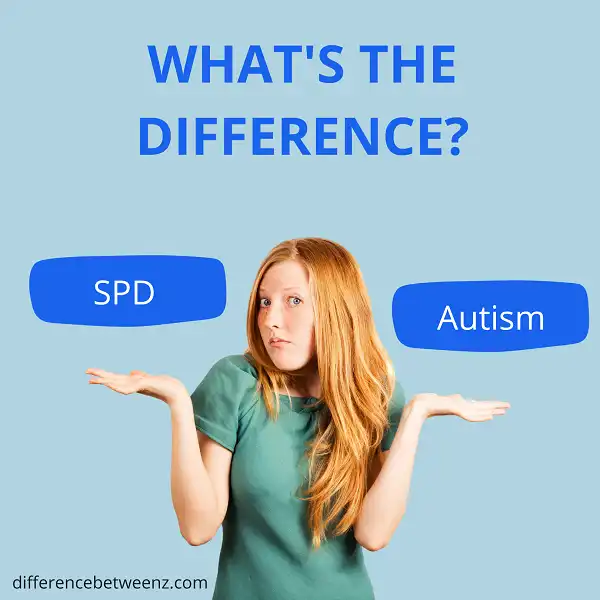There is a lot of confusion about the differences between SPD and autism. Some people think that they are one and the same, while others believe that they are completely different disorders. In reality, SPD and autism are two separate disorders that have some similarities, but also some key differences. This article will explore those differences in more detail.
What is SPD?
- SPD, or Sensory Processing Disorder, is a condition that affects the way the brain processes information from the senses. People with SPD can be oversensitive to certain stimuli, such as sounds or textures, or they may be undersensitive to others. As a result, they may have difficulty processing and making sense of the information they receive from their environment.
- SPD can cause a variety of symptoms, including problems with self-regulation, social skills, and communication. It can also lead to difficulty in paying attention and concentrating.
- SPD is a relatively new diagnosis, and more research is needed to better understand the condition. However, SPD is real and it can have a significant impact on a person’s life.
What is Autism?
- Autism is a neurological and developmental disorder that typically appears during the first three years of life. The disorder is characterized by difficulty with social interaction, communication, and repetitive behaviors. Autism spectrum disorder (ASD) is the term used to describe a group of disorders that share similar features but can range from mild to severe.
- Autism occurs in all ethnic and socioeconomic groups and is four times more likely to affect boys than girls. There is no single cause of autism, but it is believed to be caused by a combination of genetic and environmental factors.
- Early intervention is critical for children with ASD, as it can help improve communication and social skills. There is no cure for autism, but with early intervention and appropriate therapies, most children make significant progress.
Difference between SPD and Autism
- SPD and Autism are both neurodevelopmental disorders that can cause a range of social, communication, and behavioral challenges. SPD is characterized by difficulties with sensory processing, which can impact the ability to interpret information from the senses (e.g., sight, sound, touch, taste, and smell).
- This can lead to problems with processing and responding to information in an appropriate way. Autism is characterized by difficulties with social interaction and communication as well as repetitive behaviors or interests.
- SPD and Autism share some symptoms, but they are different disorders. SPD is a diagnosis that is given when symptoms are not due to another disorder, such as Autism. SPD can occur in people with or without Autism. There is no cure for SPD or Autism, but there are treatments that can help improve symptoms.
Conclusion
SPD and autism are both spectrums, which means that there is a lot of overlap between the two. However, there are some key distinctions. For example, people with autism may have more trouble with communication and social interaction than those with SPD. Additionally, people with autism often have restricted interests or repetitive behaviors, while people with SPD do not typically exhibit these characteristics. If you’re unsure whether your child has SPD or autism, it’s important to consult a professional who can make an accurate diagnosis.


